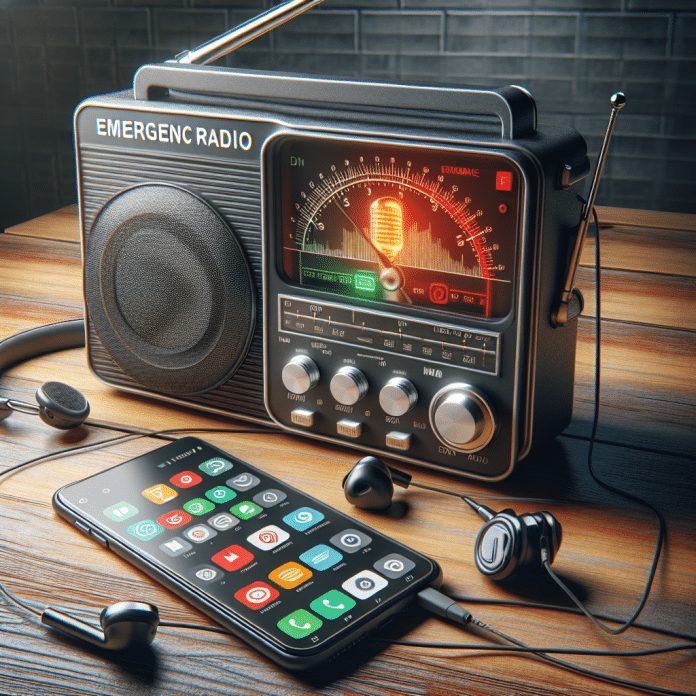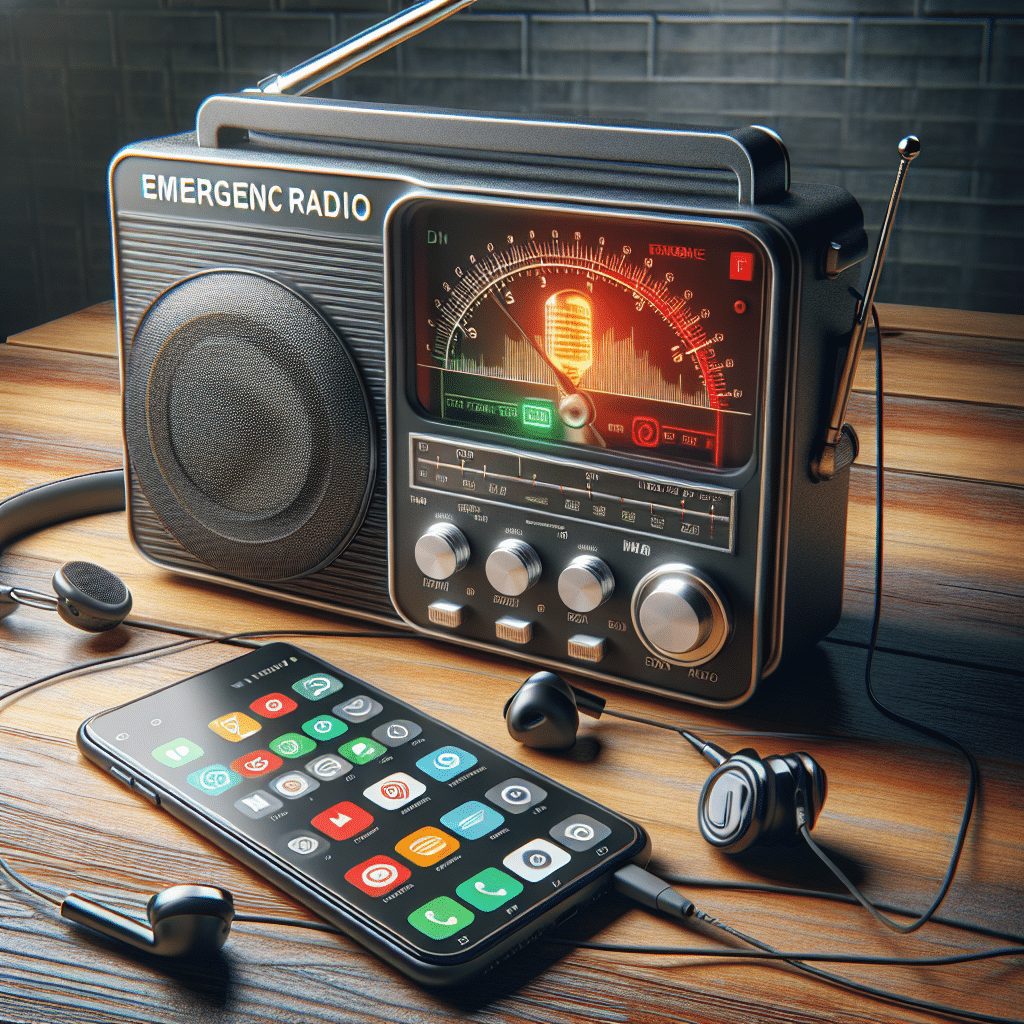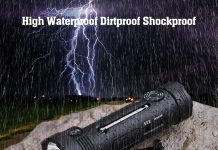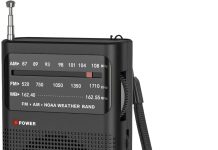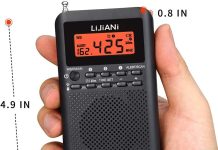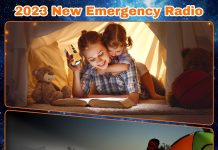Imagine this scenario: you find yourself in the midst of a calamity, cut off from the world with no access to the latest news or vital information. In such a dire situation, an emergency radio could be your lifeline. But have you ever wondered if these devices are capable of picking up FM radio stations and even streaming services? In this article, we will explore the capabilities of emergency radios and answer the burning question: can they truly provide us with a connection to the outside world when we need it the most? Yes, they can. Emergency radios are versatile devices that are designed to provide communication and information during emergencies. They are equipped with various features and capabilities that make them essential tools for emergency preparedness. In this article, we will explore the different types of emergency radios, how they work, and their capabilities when it comes to FM radio reception and streaming services. We will also discuss the importance of emergency radios in public safety, advancements in emergency radio technology, and the role of radio communication in emergency preparedness.
Review contents
Types of Emergency Radios
There are several types of emergency radios available in the market, each with its own set of features and functionalities. The most common types include handheld radios, base station radios, and weather radios. Handheld radios are portable and can be easily carried around, making them suitable for outdoor activities and emergencies on the go. Base station radios, on the other hand, are designed to be stationary and provide a stronger signal range. Weather radios are specialized devices that receive and broadcast weather alerts and updates from the National Weather Service. These radios are crucial for staying informed about severe weather conditions and taking appropriate action.
How Emergency Radios Work
Emergency radios work by receiving and transmitting radio signals. They operate on different frequency bands, including FM, AM, and weather bands. When you tune in to a specific frequency, the radio antenna picks up the corresponding signals and converts them into audible sound. Emergency radios can also include additional features such as built-in flashlights, solar panels for charging, and USB ports for charging other devices. Some models even have built-in sirens and emergency alert systems to notify you of potential dangers or evacuation orders.
Features of Emergency Radios
Emergency radios come with a range of features that enhance their functionality and usability. Some common features include multiple power sources, such as built-in rechargeable batteries, solar panels, and hand-crank generators. These power sources ensure that the radio can still function even when external power is not available. Additionally, many emergency radios have built-in USB ports that allow you to charge your mobile devices, ensuring that you can stay connected even in emergencies. Some radios also have an integrated NOAA weather radio function, which provides real-time weather updates and alerts. This feature is particularly important for outdoor enthusiasts and those living in areas prone to severe weather conditions.
FM Radio Reception on Emergency Radios
FM radio reception is a commonly sought-after capability in emergency radios. FM radio frequencies are widely used by broadcasters to transmit music, news, and other entertainment. Having access to FM radio on an emergency radio can be valuable during emergencies for staying informed about local news, emergency updates, and broadcasts from authorities. Emergency radios that have FM radio reception capabilities allow you to tune in to your favorite FM stations and listen to live broadcasts, even when the power is out or other communication channels are compromised.
FM Radio Frequencies
FM radio frequencies typically range from 88 MHz to 108 MHz. These frequencies are allocated to different radio stations across the country. Each station broadcasts on a specific frequency, and you can tune in to a station by setting your emergency radio to that frequency.
FM Radio Tuning on Emergency Radios
Tuning in to FM radio stations on an emergency radio is relatively straightforward. Most emergency radios have a built-in tuner that allows you to scan through different frequencies. You can either manually key in the frequency or use the radio’s automatic tuning feature to search for available FM stations in your area. Once tuned in, you can listen to the FM broadcasts through the radio’s built-in speaker or by connecting headphones.
Factors Affecting FM Radio Reception
FM radio reception can be affected by various factors. One of the primary factors is the distance between the radio and the radio station’s broadcasting tower. The farther you are from the tower, the weaker the signal strength will be, which may result in poor reception or static. Additionally, physical obstacles such as buildings, hills, or dense foliage can obstruct the radio signals and impact reception. To overcome these limitations, some emergency radios come with external antenna jacks that allow you to connect an external antenna for better reception. These antennas can be mounted on rooftops or positioned in areas with better signal reception.
Can Emergency Radios Stream?
In recent years, the ability to stream audio content has become increasingly important. However, not all emergency radios have the capability to stream content from popular streaming services such as Spotify or Pandora. Most emergency radios are designed for receiving and broadcasting terrestrial radio signals, including AM, FM, and weather frequencies. Streaming services typically require an internet connection, which may not be available during emergencies or in remote areas. Therefore, emergency radios that can stream content are limited in number, and it is essential to carefully consider your specific needs and the availability of internet connectivity when choosing an emergency radio.
Alternative Ways to Access Streaming Services
While emergency radios may not have built-in streaming capabilities, there are alternative ways to access streaming services during emergencies. One option is to use a portable Wi-Fi hotspot device that can provide internet connectivity to your emergency radio and other devices. These devices utilize cellular networks to create a local Wi-Fi network, allowing you to connect your emergency radio and stream content. Another option is to use a smartphone with a data plan that includes mobile hotspot functionality. By tethering your emergency radio to your smartphone, you can utilize the smartphone’s internet connection to stream content. However, it is important to note that these options are dependent on cellular network availability and may not be reliable in all emergency situations.
Importance of Streaming Services in Emergencies
While FM radio reception is crucial during emergencies, streaming services can provide additional sources of information, entertainment, and comfort. Streaming services can deliver real-time news updates, emergency broadcasts, and relevant information from trusted sources. Additionally, streaming services can offer entertainment options to help alleviate stress and anxiety during challenging times. Listening to music or podcasts can provide a sense of normalcy and boost morale. Furthermore, some streaming services offer specialized emergency playlists or channels that curate content specifically for emergency situations. These playlists often include calming music, guided meditations, and informative podcasts that can be invaluable during emergencies.
Emergency Radio Brands and Their Compatibility
When it comes to emergency radios, there are several trusted brands known for their quality and reliability. These brands offer a wide range of models with different features, capabilities, and compatibility with FM radio and streaming services. Some of the top emergency radio brands include Midland, Eton, Sangean, and Kaito. These brands have established a strong reputation for producing durable and feature-rich emergency radios that can withstand the demands of emergencies while providing reliable communication and information.
Compatibility with FM Radio and Streaming Services
When choosing an emergency radio, it is crucial to consider its compatibility with FM radio and streaming services if these features are important to you. While most emergency radios have FM radio reception capabilities, not all models can stream content from popular streaming services. It is important to review the specifications and features of each model to determine if it meets your specific needs. Look for emergency radios that clearly state their ability to stream content and ensure that they have the necessary Wi-Fi or internet connectivity options.
Best Emergency Radios for FM Radio and Streaming
Considering the various factors involved, some emergency radios stand out for their FM radio reception and streaming capabilities. The Midland ER310 is a highly recommended model that offers FM radio reception, NOAA weather alerts, and the ability to charge mobile devices. Another popular choice is the Eton FRX5-BT, which combines FM radio reception, weather alerts, and Bluetooth streaming capabilities. For those looking for internet-enabled emergency radios, the Sangean PR-D9W and the Kaito KA700 offer Wi-Fi connectivity, allowing you to stream online content during emergencies. These models provide a reliable and comprehensive solution for FM radio reception and streaming services in emergencies.
Choosing the Right Emergency Radio for FM Radio and Streaming
When buying an emergency radio, there are several considerations to keep in mind to ensure you choose the right model for your needs. First and foremost, assess your specific requirements and prioritize the features that are most important to you. If FM radio reception is crucial, look for radios with strong reception capabilities and the ability to tune into a wide range of frequencies. For streaming services, consider models that have built-in Wi-Fi or the option to connect to mobile hotspots. Additionally, look for radios with long battery life or multiple power sources, ensuring that your radio can stay operational during extended power outages. Consider the size and portability of the radio, especially if you plan to use it during outdoor activities or evacuations. Lastly, read reviews and gather feedback from other users to gain insights into the reliability and performance of the emergency radio models you are considering.
Considerations When Buying an Emergency Radio
When buying an emergency radio, it is important to consider factors such as FM radio reception capabilities, streaming services compatibility, power sources, and portability. These considerations will help ensure that the emergency radio you choose meets your specific needs and provides reliable communication and information during emergencies.
Features to Look for
Look for emergency radios that offer FM radio reception capabilities and the ability to tune into a wide range of frequencies. Streaming services compatibility may be an additional feature to consider, but remember that it requires reliable internet connectivity, which may not be available in all emergency situations. Opt for radios with multiple power sources, such as rechargeable batteries, solar panels, and hand-crank generators, to ensure continuous operation even when external power is not available. Additionally, consider the radio’s portability, durability, and additional features such as built-in flashlights or USB charging ports.
Recommended Models
Based on their features, reliability, and customer reviews, some recommended emergency radio models for FM radio reception and streaming services include the Midland ER310, Eton FRX5-BT, Sangean PR-D9W, and Kaito KA700. These models offer a combination of FM radio reception, weather alerts, and streaming capabilities, making them versatile and reliable tools for emergency communication and information.
Emergency Radio Role in Public Safety
Emergency radios play a vital role in public safety by providing reliable communication channels during emergencies. They serve as a lifeline for individuals and communities, enabling them to stay informed, request assistance, and receive updates during critical situations. Emergency radios ensure that people have access to real-time information, enabling them to make informed decisions and take appropriate action to protect themselves and others. They are particularly important in situations where traditional communication channels, such as cell phones or internet services, may be disrupted or overwhelmed.
Communication during Emergencies
During emergencies, effective communication is essential for coordinating response efforts, disseminating critical information, and ensuring public safety. Emergency radios provide a reliable means of communication, allowing emergency response personnel, authorities, and the public to exchange vital information and coordinate rescue and relief efforts. They enable individuals to communicate their needs, report emergencies, and receive instructions or assistance from authorities. By facilitating clear and efficient communication, emergency radios contribute to the overall effectiveness and coordination of emergency response operations.
Emergency Alert System Integration
Many modern emergency radios are equipped with an integrated emergency alert system. This system enables the radio to receive and broadcast emergency alerts issued by government agencies, such as the National Weather Service or local authorities. These alerts can include severe weather warnings, Amber Alerts for missing children, and other critical information related to public safety. Integration with the Emergency Alert System ensures that emergency radios can provide real-time alerts and updates to individuals, allowing them to take immediate action to protect themselves and their loved ones.
Advancements in Emergency Radio Technology
Advancements in technology have allowed for significant improvements in the capabilities of emergency radios. Two notable advancements include the development of digital radios and the integration of internet connectivity.
Digital Radios and HD Radio
Digital radios offer enhanced audio quality and reception compared to their analog counterparts. They utilize digital signals and advanced modulation techniques to provide clearer and more reliable sound. Digital radios can also transmit data, allowing for additional features such as text displays and visual information. Additionally, the emergence of HD radio technology has further improved FM radio reception on emergency radios by delivering high-quality audio and additional digital services such as song and artist information.
Internet-Enabled Emergency Radios
Internet-enabled emergency radios utilize Wi-Fi or cellular connectivity to access online resources and streaming services. These radios provide increased functionality and access to a wide range of information during emergencies. They can stream news updates, weather forecasts, real-time emergency information, and even multimedia content. Internet connectivity also allows for remote monitoring and control of the emergency radio, enabling authorities to issue alerts or updates directly to individuals through their emergency radios.
Future Developments
With the rapid advancement of technology, the future of emergency radios looks promising. We can expect further improvements in digital radio technology, resulting in even better audio quality and reception. Additionally, the integration of artificial intelligence and machine learning capabilities may enable emergency radios to analyze and interpret data in real-time, providing more accurate and tailored information to individuals. Internet connectivity is also likely to continue evolving, allowing for faster and more reliable access to online resources during emergencies. These developments will ensure that emergency radios remain effective and reliable tools for communication and information in the face of evolving emergency situations.
Importance of Emergency Preparedness
Emergency preparedness is crucial for individuals, families, and communities to effectively respond to and withstand emergencies. By being prepared, you can minimize the potential impact of emergencies and increase your resilience in the face of adversity. Emergency radios play a crucial role in emergency preparedness by providing reliable communication and information during critical situations. They serve as a lifeline, connecting individuals to vital information, authorities, and essential services.
Different Communication Options
When it comes to emergency communication, having multiple options is essential. Cell phones and internet services are commonly relied upon for communication, but they can be unreliable during emergencies due to network congestion, power outages, or physical infrastructure damage. Emergency radios, on the other hand, are self-contained devices that do not rely on external networks. They provide a direct means of communication, allowing individuals to receive information and broadcast messages without dependency on external factors. It is important to have backup communication options such as emergency radios to ensure that you can stay connected and informed even when traditional communication channels are compromised.
Role of Radio in Emergency Preparedness
Radio has been a trusted source of information during emergencies for many decades. Its widespread availability, ease of use, and ability to broadcast over long distances make it a valuable tool for emergency preparedness. Emergency radios allow individuals to receive updates and instructions from authorities, access real-time weather information, and stay connected with their community during emergencies. They provide a reliable and accessible means of communication that can be relied upon when other communication channels fail. Including an emergency radio in your preparedness kit ensures that you have a dependable source of information and communication during emergencies.
Battery Life and Backup Power
One of the crucial factors to consider when using emergency radios is their battery life and backup power options. During extended power outages, it is essential to ensure that your emergency radio remains operational. Look for radios with long battery life or those that offer multiple power sources such as rechargeable batteries, solar panels, or hand-crank generators. Rechargeable batteries can be charged using external power sources such as wall outlets or USB ports. Solar panels allow you to recharge the batteries using sunlight, providing a sustainable and renewable power source. Hand-crank generators are manual power sources that allow you to generate power by simply turning a crank, ensuring that your radio can be powered even in the absence of electricity or sunlight.
Using External Antennas for Better Reception
To enhance the FM radio reception on your emergency radio, you may consider using an external antenna. External antennas can improve signal strength and reception by positioning the antenna in an area with better signal coverage. Some emergency radios come with external antenna jacks that allow you to connect a compatible antenna. These antennas can be mounted on rooftops, elevated areas, or positioned using extendable poles for optimal reception. Additionally, you can explore options such as telescopic antennas or wire antennas that can be positioned near windows or in outdoor areas to improve signal reception.
Maintaining and Updating Emergency Radios
Maintaining and updating your emergency radios is essential to ensure their reliability and performance when emergencies strike. Regularly check the condition of the batteries and recharge them as needed. Keep an eye on the expiration dates of the batteries and replace them when necessary. Perform routine maintenance checks, such as cleaning the radio’s exterior and ensuring that buttons and switches are in proper working condition. Stay updated with the latest firmware or software updates for your emergency radio model. Manufacturers often release updates to improve performance, add new features, or address any identified issues. Regularly reviewing and updating your emergency radio’s software will ensure that it remains up to date and can provide the best possible communication and information during emergencies.

